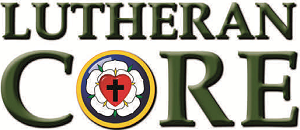The Advent Wreath
Advent traditions will vary by country, but the thought behind Advent is mostly the same across cultures and denominations. Derived from the Latin word “adventus”, the word “advent” means “arrival” or “coming”. In this instance, it is used to mark the Sundays between Christ the King Sunday and the arrival of the baby Jesus on Christmas Day. Unlike Christmas, Advent is a season of expectation, introspection, and hope, it is the time when the Christian Church remembers the prophecy of the coming Messiah into the world as the Christ child, and also the coming again of the Crucified, risen, ascended, and exalted Christ, the King of Glory.
The tradition of Advent dates back to the 4th or 5th century. The Advent wreath used by congregations across denominations today, first appeared in 1839. As the story goes, in 1839, a Lutheran minister working at a children’s mission in Germany created a wreath out of the wheel of a cart. The minister placed 20 small red candles upon the outer ring of the wheel and four larger white candles inside the ring, lighting the red candles on weekdays and the four white candles on Sundays as a way for the children to countdown the days until Christmas.
Advent wreaths were eventually fashioned out of evergreens, twisted together in a circle to symbolize continuous life across the seasons, from the death of winter to the new life of spring. Naturally, this earthly symbolism also points to the spiritual symbolism of newness and the promise of eternal life and salvation offered through the sacrifice of Jesus Christ. The circular nature of the wreath, similar to a wedding ring or band, is further meant to reflect the unending love of Christ and eternal life offered through salvation.
Designating the names for the various candles of the Advent Wreath is a more recent tradition, most likely from the early to mid-20th century. Since that time, various traditions have been developed by denominational publishing houses and even candle companies. There are no strict traditional names for the candles upon the wreath. Names for Advent candles are usually tied to lectionary texts. As new lectionaries are developed, some older traditional texts may be replaced with other Biblical texts according to denominational traditions.
The most common designations for the four candles of the wreath among Protestant denominations are 1) Prophets Candle, 2) Bethlehem Candle, 3) Shepherds Candle, and 4) Angels Candle. Another set of designations commonly used are Hope, Peace, Joy, and Love.
Keep in mind, the use of candles and Advent wreaths during worship is a human tradition and not one mandated by Scripture. Such symbols are used to help worshipers focus their hearts and minds in their worship of the One True God and his promise to save people from their sin. designations for candles, or the order in which they are lit, should never be construed as having one proper order or process of being lit before, or during worship. Only the symbolism of the light of Christ breaking through the darkness of our world should be the focus.
St. Jacob’s Advent Wreath will be placed in the front of the church nave on November 27th, the first Sunday of Advent.

